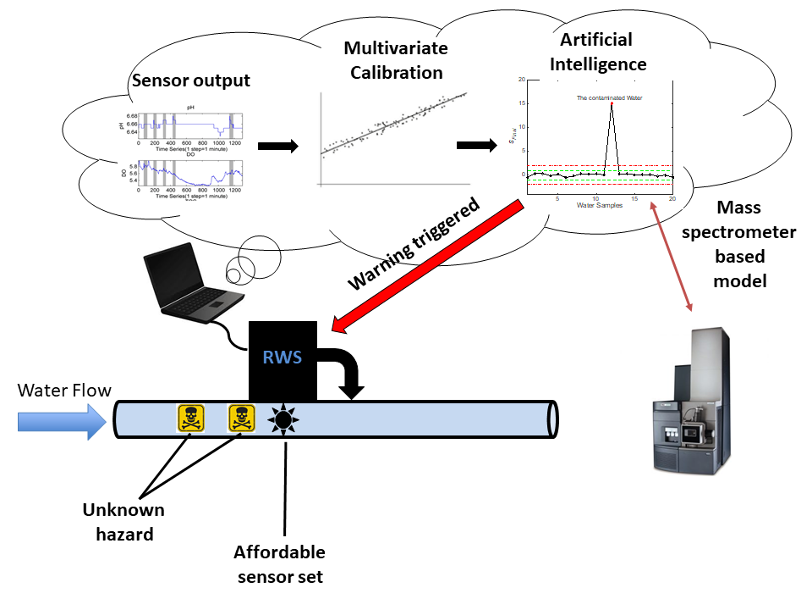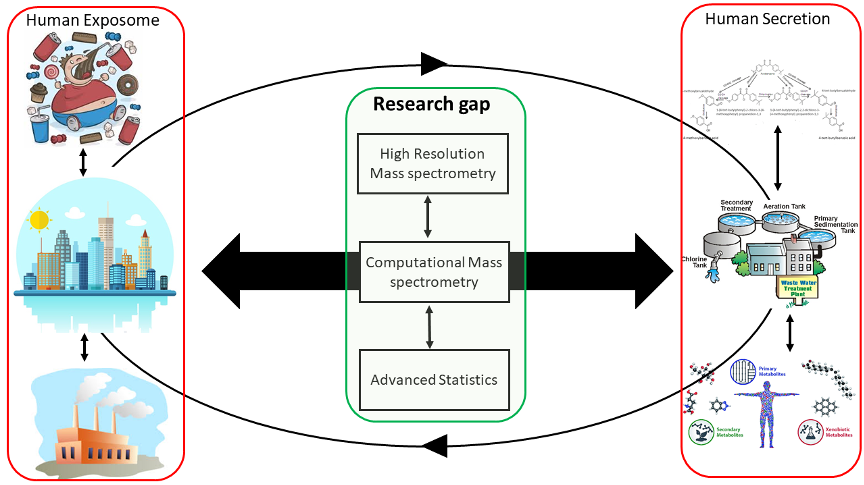Research
If you are interested in participating in one of these projects and/or would like to collaborate, please contact Dr. Samanipour.
HRMS data processing toolbox
Recent advances in analytical tools such as comprehensive two-dimensional chromatography (i.e. GCxGC and LCxLC) and high-resolution mass spectrometry have enabled a more detailed chemical characterization of complex samples from different sources (e.g. biological and/or environmental). However, these instruments produce a huge amount of data up to 5 GB per sample. These data are highly complex and the conventional data processing approaches may not be adequate to take full advantage of the recorded information in them.
This project aims at utilizing the combination HRMS and modern data processing tools to facilitate the identification of natural and anthropogenic chemicals in complex samples from environmental sciences to medicinal chemistry. This project will result in an open source/access toolbox for handling such data.

Relevant references:
- Samanipour, S.; O’Brien, J.; Reid, M.; and Thomas, K. V., A self-adjusting algorithm for non-targted feature detection of LC-HRMS data, Anal. Chem., 2019, 91 (16), 10800–10807.
- Samanipour, S. et al. Exploring the potential of a global emerging contaminant early warning network through the use of retrospective suspect screening with high-resolution mass spectrometry, Environ. Sci. Technol., 2018, 52 (9), pp 5135–5144.
- Samanipour, S.; Reid M. J.; Baek, K.; and Thomas, K. V., Combining a deconvolution and a universal library search algorithm for the non-target analysis of data independent LC-HRMS spectra, Environ. Sci. Technol., 2018, 52 (8), pp 4694–4701.
- Samanipour, S.; Reid, M. R.; and Thomas, K. V., Statistical Variable Selection: An Alter- native Prioritization Strategy during the Nontarget Analysis of LC-HR-MS Data, Anal. Chem., 2017, 89 (10), 5585-5591.
- Samanipour, S.; Baz-Lomba, J. A.; Alygizakis, N. A.; Reid, M. R.; Thomaidis, N. S.; and Thomas, K. V., Two stage algorithm vs commonly used approaches for the suspect screening of complex environmental samples analyzed via liquid chromatography high resolution time of flight mass spectroscopy: A test study, J. Chromatogr. A, 2017, Volume 1501, Pages 68-78.
Combination of HRMS and SA for real-time monitoring
In the past two decades there have been multiple instances of water contamination caused by chemical spills and/or unrestricted use of chemicals assumed to be safe across the globe from Australia, China, and Europe to the US and Canada. Alarmingly, in all the mentioned cases, the contaminated water reached the consumers before the authorities were aware of the potential problem. This implied the exposure of the affected people to, potentially, harmful levels of these chemicals without a clear knowledge of their long-term effects on the human health. Besides the chemical spills, additional challenges caused by the effects of climate change, human chemical footprint, population increase, soil quality deterioration caused by land and water mismanagement, ageing infrastructure, and global water scarcity are compromising the health status of the environment, particularly water resources.
This project will, fundamentally, change the current water monitoring paradigm through the combination of different data sources such as HRMS and SA utilizing big-data approaches (e.g. ML and AI).

Relevant references:
- Samanipour, S.; Kaserzonb, S.; Vijayasarathy, S.; Jiang, H.; Choi, P.; Reid, M.; Mueller, J.; and Thomas, K. V., Machine Learning Combined with Non-targeted LC-HRMS Analysis for a Risk Warning System of Chemical Hazards in Drinking Water, Talanta, 2019 195, pp 426–432.
Exploring the chemical space of HRMS data
The recent advances in both the analytical and computational tools have drastically improved our capacity in chemical characterization of complex samples from different sources (e.g. biological and/or environmental). However, still today, to predict and/or assess the fate and behavior of a chemical in a process a complete knowledge of its chemical structure is necessary. This implies that a comprehensive assessment of the fate of the chemicals towards the environment and human health is impossible given the sheer number of chemicals around us (i.e. man-made chemicals, natural ones, and their transformation products). The aim of this research area is to take full advantage of chromatographic and mass spectrometric behavior of the chemicals to predict their fate in different processes.
This project will take advantage of already available machine learning algorithms (e.g. deep learning approaches) and the publicly available repositories of fragmentation patterns and physical-chemical properties to build the needed models.

Community based exposomics
Today the human body is exposed to a wide range of environmental and chemical stressors through its surroundings and consumption habits (e.g. food, prescription drugs, and illicit drugs). Consequently, the human body produces a wide range of metabolites and/or transformation products in response to these stressors. These released chemicals (i.e. metabolites and/or transformation products) from the human body may vary based on the level of exposure, the type of exposure and its health status. Therefore, it should be possible to identify the characteristics of the human exposome, where the exposome is defined as the totality of environmental exposures from conception onwards (i.e. exposomics), by comprehensive evaluation of human secretions (e.g. urine). The wastewater can be considered a pooled urine sample of a certain population that can give us an exclusive access to that population’s exposome. However, these samples are highly complex and data rich, therefore, their processing becomes a challenging task.
The aim of this project is to gain a better understanding of the human exposome and its associations with health disorders (e.g. biomarkers). This is a multidisciplinary and novel field of study combining targeted and non-targeted metabolomic, computational mass spectrometry, epidemiology, and advanced statistics to studying the role of the environment in human disease.

Relevant references:
- Choi, P.; O’Brien, J. W.; Tscharke, B.; Mueller, J. F.; Thomas, K. V.; and Samanipour, S.; Population Socioeconomics Predicted Using Wastewater, Environ. Sci. Technol. Lett, 2020.
- Choi, P.; Tscharke, B.; Samanipour, S.; Hall, W. D.; Gartner, C. E.; Thomas, K. V.; Mueller, J. F.; O’Brien, J. W., Social, demographic and economic correlates of chemical consumption measured by wastewater based epidemiology, Proc. Natl. Acad. Sci., 2019, 116 (43), 21864– 21873.
- Ahmed, F.; Tscharke, B.; O’Brien, J. W.; Thompson, J.; Samanipour, S.; Choi, P.; Li, J.; Mueller, J. F.; Thomas, K. V., Wastewater-based estimation of the prevalence of gout in Australia, STOTEN, 715, 2020, 136925.